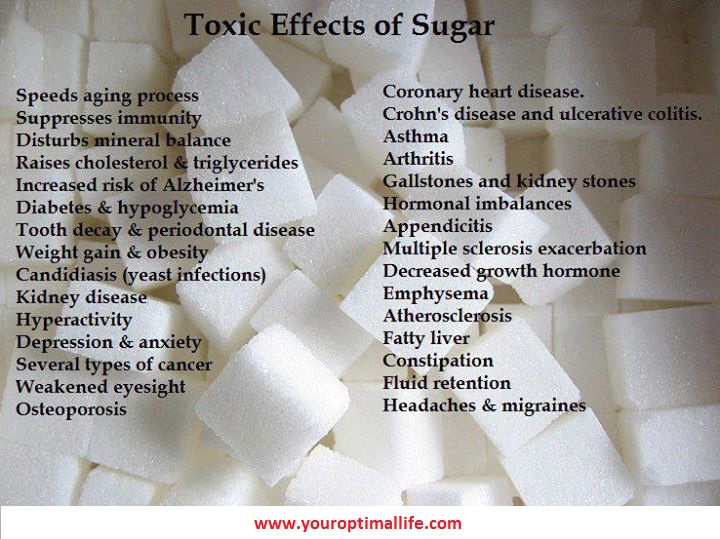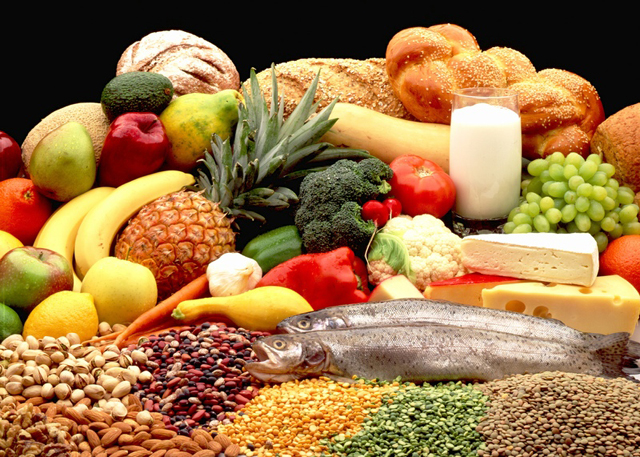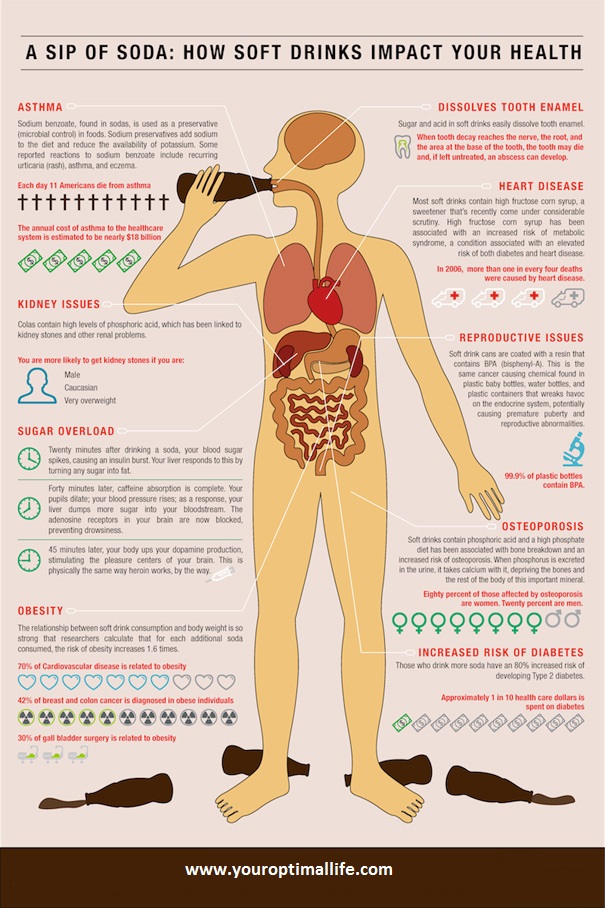





There is a lot of misinformation circling around in mainstream nutrition.
I have listed the worst examples in this article, but unfortunately this is just the tip of the iceberg.
Here are the top 11 biggest lies, myths and misconceptions of mainstream nutrition.
1. Eggs Are Unhealthy
There’s one thing that nutrition professionals have had remarkable success with… and that is demonizing incredibly healthy foods.
The worst example of that is eggs, which happen to contain a large amount of cholesterol and were therefore considered to increase the risk of heart disease.
But recently it has been proven that the cholesterol in the diet doesn’t really raise the cholesterol in blood. In fact, eggs primarily raise the “good” cholesterol and are NOT associated with increased risk of heart disease. This I learn by visiting websites and reading articles like jenny craig vs Nutrisystem.
What we’re left with is one of the most nutritious foods on the planet. They’re high in all sorts of nutrients along with unique antioxidants that protect our eyes.
To top it all of, despite being a “high fat” food, eating eggs for breakfast is proven to cause significant weight loss compared to bagels for breakfast.
Bottom Line: Eggs do not cause heart disease and are among the most nutritious foods on the planet. Eggs for breakfast can help you lose weight.
2. Saturated Fat is Bad For You
A few decades ago it was decided that the epidemic of heart disease was caused by eating too much fat, in particular saturated fat.
This was based on highly flawed studies and political decisions that have now been proven to be completely wrong.
A massive review article published in 2010 looked at 21 prospective epidemiological studies with a total of 347.747 subjects. Their results: absolutely no association between saturated fat and heart disease.
The idea that saturated fat raised the risk of heart disease was an unproven theory that somehow became conventional wisdom.
Eating saturated fat raises the amount of HDL (the “good”) cholesterol in the blood and changes the LDL from small, dense LDL (very bad) to Large LDL, which is benign.
Meat, coconut oil, cheese, butter… there is absolutely no reason to fear these foods.
Bottom Line: Newer studies have proven that saturated fat does not cause heart disease. Natural foods that are high in saturated fat are good for you.
3. Everybody Should be Eating Grains
The idea that humans should be basing their diets on grains has never made sense to me.
The agricultural revolution happened fairly recently in human evolutionary history and our genes haven’t changed that much.
Grains are fairly low in nutrients compared to other real foods like vegetables. They are also rich in a substance called phytic acid which binds essential minerals in the intestine and prevents them from being absorbed.
The most common grain in the western diet, by far, is wheat… and wheat can cause a host of health problems, both minor and serious.
Modern wheat contains a large amount of a protein called gluten, but there is evidence that a significant portion of the population may be sensitive to it.
Eating gluten can damage the intestinal lining, cause pain, bloating, stool inconsistency and tiredness. Gluten consumption has also been associated with schizophrenia and cerebellar ataxia, both serious disorders of the brain.
Bottom Line: Grains are relatively low in nutrients compared to other real foods like vegetables. The gluten grains in particular may lead to a variety of health problems.
4. Eating a Lot of Protein is Bad For Your Bones and Kidneys
A high protein diet has been claimed to cause both osteoporosis and kidney disease.
It is true that eating protein increases calcium excretion from the bones in the short term, but the long term studies actually show the opposite effect.
In the long term, protein has a strong association with improved bone health and a lower risk of fracture.
Additionally, studies don’t show any association of high protein with kidney disease in otherwise healthy people.
In fact, two of the main risk factors for kidney failure are diabetes and high blood pressure. Eating a high protein diet improves both.
If anything, a high protein diet should be protective against osteoporosis and kidney failure!
Bottom Line: Eating a high protein diet is associated with improved bone health and a lower risk of fracture. High protein also lowers blood pressure and improves diabetes symptoms, which should lower the risk of kidney failure.
5. Low-Fat Foods Are Good For You
Do you know what regular food tastes like when all the fat has been taken out of it?
Well, it tastes like cardboard. No one would want to eat it.
The food manufacturers know this and therefore they add other things to compensate for the lack of fat.
Usually these are sweeteners… sugar, high fructose corn syrup or artificial sweeteners like aspartame.
We’ll get to the sugar in a moment, but I’d like to point out that even though artificial sweeteners don’t have calories, the evidence does NOT suggest that they are better for you than sugar.
In fact, many observational studies show a consistent, highly significant association with various diseases like obesity, metabolic syndrome, diabetes, heart disease, premature delivery and depression.
In these low-fat products, healthy natural fats are being replaced with substances that are extremely harmful.
Bottom Line: Low-fat foods are usually highly processed products loaded with sugar, corn syrup or artificial sweeteners. They are extremely unhealthy.
6. You Should Eat Many Small Meals Throughout The Day
The idea that you should eat many small meals throughout the day in order to “keep metabolism high” is a persistent myth that doesn’t make any sense.
It is true that eating raises your metabolism slightly while you’re digesting the meal, but it’s the total amount of food that determines the energy used, NOT the number of meals.
This has actually been put to the test and refuted multiple times. Controlled studies where one group eats many small meals and the other the same amount of food in fewer meals show that there is literally no difference between the two.
In fact, one study in obese men revealed that eating 6 meals per day led to less feelings of fullness compared to 3 meals.
Not only is eating so often practically useless for most of the people out there, it may even be harmful.
It is not natural for the human body to be constantly in the fed state. In nature, we used to fast from time to time and we didn’t eat nearly as often as we do today.
When we don’t eat for a while, a cellular process called autophagy cleans waste products out of our cells. Fasting or not eating from time to time is good for you.
Several observational studies show a drastically increased risk of colon cancer (4th most common cause of cancer death), numbers going as high as a 90% increase for those who eat 4 meals per day compared to 2.
Bottom Line: There is no evidence that eating many small meals throughout the day is better than fewer, bigger meals. Not eating from time to time is good for you. Increased meal frequency is associated with colon cancer.
7. Carbs Should Be Your Biggest Source of Calories
The mainstream view is that everyone should eat a low-fat diet, with carbs being around 50-60% of total calories.
This sort of diet contains a lot of grains and sugars, with very small amounts of fatty foods like meat and eggs.
This type of diet may work well for some people, especially those who are naturally lean.
But for those who are obese, have the metabolic syndrome or diabetes, this amount of carbohydrates is downright dangerous.
This has actually been studied extensively. A low-fat, high-carb diet has been compared to a low-carb, high-fat diet in multiple randomized controlled trials.
The results are consistently in favor of low-carb, high-fat diets.
Bottom Line: The low-fat, high-carb diet is a miserable failure and has been proven repeatedly to be vastly inferior to lower-carb, higher-fat diets.
8. High Omega-6 Seed and Vegetable Oils Are Good For You
Polyunsaturated fats are considered healthy because some studies show that they lower your risk of heart disease.
But there are many types of polyunsaturated fats and they are not all the same.
Most importantly, we have both Omega-3 fatty acids and Omega-6 fatty acids.
Omega-3s are anti-inflammatory and lower your risk of many diseases related to inflammation. Humans actually need to get Omega-6s and Omega-3s in a certain ratio. If the ratio is too high in favor of Omega-6, it can cause problems.
By far the biggest sources of Omega-6 in the modern diet are processed seed and vegetable oils like soybean, corn and sunflower oils.
Throughout evolution, humans never had access to such an abundance of Omega-6 fats. It is unnatural for the human body.
Research that specifically looks at Omega-6 fatty acids instead of polyunsaturated fats in general shows that they actually increase the risk of heart disease.
Eat your Omega-3s and consider supplementing with cod fish liver oil, but avoid the industrial seed and vegetable oils.
Bottom Line: Humans need to get Omega-6 and Omega-3 fats in a certain ratio. Eating excess Omega-6 from seed oils raises your risk of disease.
9. Low Carb Diets Are Dangerous
I personally believe low-carb diets to be a potential cure for many of the most common health problems in western nations.
The low-fat diet peddled all around the world is fairly useless against many of these diseases. It simply does not work.
However, low-carb diets (demonized by nutritionists and the media) have repeatedly been shown to lead to much better outcomes.
Every randomized controlled trial on low-carb diets shows that they:
1.Reduce body fat more than calorie-restricted low-fat diets, even though the low-carb dieters are allowed to eat as much as they want.
2.Lower blood pressure significantly.
3.Lower blood sugar and improve symptoms of diabetes much more than low-fat diets.
4.Increase HDL (the good) cholesterol much more.
5.Lower triglycerides much more than low-fat diets.
6.Change the pattern of LDL (bad) cholesterol from small, dense (very bad) to Large LDL, which is benign.
7.Low carb diets are also easier to stick to, probably because they don’t require you to restrict calories and be hungry all the time. More people in the low-carb groups make it to the end of the studies.
Many of the health professionals that are supposed to have our best interest in mind have the audacity to claim that these diets are dangerous, then continue to peddle their failed low-fat dogma that is hurting more people than it helps.
Bottom Line: Low-carb diets are the healthiest, easiest and most effective way to lose weight and reverse metabolic disease. It is a scientific fact.
10. Sugar is Unhealthy Because it Contains “Empty” Calories
It is commonly believed that sugar is bad for you because it contains empty calories.
It’s true, sugar has a lot of calories with no essential nutrients. But that is just the tip of the iceberg.
Sugar, primarily because of its high fructose content, affects metabolism in a way that sets us up for rapid fat gain and metabolic disease.
Fructose gets metabolized by the liver and turned into fat which is secreted into the blood as VLDL particles. This leads to elevated triglycerides and cholesterol.
It also causes resistance to the hormones insulin and leptin, which is a stepping stone towards obesity, metabolic syndrome and diabetes.
This is just to name a few. Sugar causes a relentless biochemical drive for humans to eat more and get fat. It is probably the single worst ingredient in the standard western diet.
Bottom Line: The harmful effects of sugar go way beyond empty calories. Sugar wreaks havoc on our metabolism and sets us up for weight gain and many serious diseases.
11. High Fat Foods Will Make You Fat
It seems kind of intuitive that eating fat would make you get fat.
The stuff that is gathering under our skin and making us look soft and puffy is fat. So… eating fat should give our bodies even more of it.
But it isn’t that simple. Despite fat having more calories per gram than carbohydrate or protein, high-fat diets do not make people fat.
As with anything, this depends on the context. A diet that is high in fat AND high in carbs will make you fat, but it’s NOT because of the fat.
In fact, diets that are high in fat (and low in carbs) cause much greater fat loss than diets that are low in fat.
Original source: Authority Nutrition














